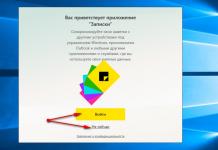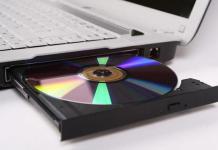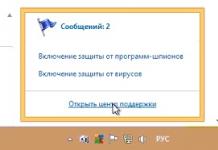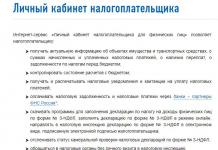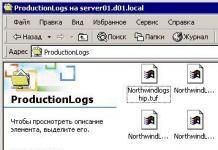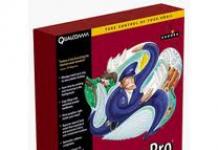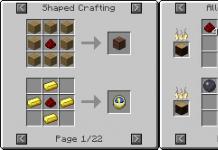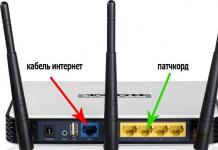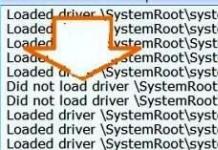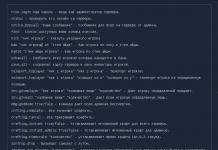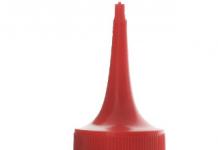The Explorer context menu is the menu that appears when you right-click (Right Mouse Button) on some object (file or folder) or simply on an empty space in a folder or Desktop. If your system is new, then the context menu will be relatively empty. Is it just something added from the video card drivers, for example like this:
but if the system has been installed for a long time, then there will be more such points. For example like this:

As you can see, over time, in addition to the standard menu items, more installed programs were added. On the one hand it is convenient. After all, you don’t need to launch a shortcut or search for a program, but you can directly perform actions right from the context menu. But on the other hand, over time there are a lot of such items and sometimes you even have to scroll up or down the context menu in search of the necessary items.
Therefore, sometimes you want to remove these items so as not to get in the way. After all, you don’t use all the points often.
So how remove item from context menu.
In order to remove a program item from the context menu (CM for short), you can use both standard methods of the Operating System itself, and using the programs themselves or specially designed ones.
The easiest way to remove it is to look in the settings of the program (which you want to remove) for the desired item. Usually it is located somewhere in Integrations or Loading/adding. For example, in order to remove the famous WinRAR item from KM, you need to uncheck the Shell integrations:

Other programs may also have similar settings.
It’s another matter when you haven’t found the necessary settings to delete or they don’t exist at all (this happens too). Then you can use the standard method of the systems itself, namely editing.
I warn you right away that before starting work it would be better to play it safe and make a backup copy of the registry.
So, let's launch the registry and go to the branch
HKEY_CLASSES_ROOT/*/shellexe/ContextMenuHandlers

and we see here these same items from the context menu.
Now right-click on the desired item (the item from the KM that you want to delete) and select Delete:

We agree with the following warning:

reboot and check. The item should disappear.
If you haven't missed it, check out the thread.
HKEY_CLASSES_ROOT\AllFileSystemObjects\ShellEx\ContextMenuHandlers
and do the same.
On a note:
If you want to delete an item specifically from KM -> Create

then you need to know the type of file () that is being created. For example, for Microsoft Office Access the file extension is .accdb, which means you need to look for it in the registry branch HKEY_CLASSES_ROOT, and then delete the ShellNew subkey there

If you want to remove from KM those items that appear when you RMB on folders, then you need to look at the branches:
HKEY_CLASSES_ROOT\Directory\shell
HKEY_CLASSES_ROOT\Directory\shellex\ContextMenuHandlers
HKEY_CLASSES_ROOT\Folder\shell
HKEY_CLASSES_ROOT\Folder\shellex\ContextMenuHandlers

For the item "Open with..." the thread answers
HKEY_CLASSES_ROOT\*\OpenWithList
For KM Logical drives branches:
HKEY_CLASSES_ROOT\Drive\shell
HKEY_CLASSES_ROOT\Drive\shellex\ContextMenuHandlers

You can also delete items using special programs. For example using ShellExView

Its principle is simple: select the desired item and click on the red circle at the top of the program. The main thing here is that Type was Context menu

Now a little about how create your own item in the context menu.
The fact is that adding such an item for folders or specific files, as well as in an “empty” space using the registry will not work. You can only assign it to when it opens with RMB on the Desktop. Therefore, I recommend reading the article and taking advantage of what is described there.
Well, or use another utility - Ultimate Windows Context Menu Customizer() which has a bunch of features, but in English. And there we only need to select the item and delete it:

If anyone is interested in more details and can’t figure it out, write in the comments and I’ll help. There, in the left column you need to select an item (computer, folder, files, etc.) where the context menu is called up, and to the right, select what to delete and click the Remove Item button at the bottom. If you are fluent in English, you will understand.
You can guess how to add your program to KM -> Create if you read the entire article carefully, namely about deleting one of this items. You just need to create a subsection on the contrary and write for the desired extension.
In general, the article turned out to be a little chaotic and more about removing it from the context menu, because... I think this is more relevant, and there is an article about adding. Therefore, if anything is not clear, write in the comments. Let's figure it out.
Many people love the Windows operating system, and many of us grew up using it. But some casual PC users - or those who have just recently switched to Windows - often get confused when looking for information about some of the simple things that control Microsoft's operating system. One such graphical element is called the "Windows context menu", or "right-click menu".
Today we'll tell you not only about this integral element of the Windows experience, but also about a third-party application that allows you to add custom elements to the context menu.
So what is the Windows context menu?
In simple terms, it is a pop-up menu that appears when you right-click in any navigation area of the screen (hence the name “right-click menu”). The context menu can be accessed in folders, the taskbar, web browsers, and other GUI areas. The context menu is not exclusive to Windows, so you may have seen it on other operating systems, including Mac OS X or Linux.
Speaking about the appearance of the Windows context menu, it looks almost the same everywhere - only the elements inside it differ. For example, the screenshot below shows the context menu that opens when you right-click on the desktop to, say, customize the desktop background image in the Personalization window.
Typically, the context menu contains elements such as “View”, “Sort”, “Copy”, “Paste”, “Rename”, “Properties”, etc. Some of the menu items are context based. In other words, in one area of the operating system the context menu may contain some items, and in another – different ones. For example, the menu that pops up when you right-click on the taskbar will contain completely different items compared to the menu you see in the screenshot below.

Here's another simple example of the context menu that appears when you right-click on a folder:

Now that you know what the context menu is in Windows and how it works, let's look at a convenient and free application that makes it easy to customize the menu.
A portable application that allows you to add custom items to the "right-click menu" in Windows 7, Windows 8 and Windows 8.1, it was developed by Sergey Tkachenko (WinAero) - a well-known developer who is the author of many useful tools, including. The application is very convenient in the sense that the entire process of adding items to the context menu requires a few clicks from the user.
To get started, launch the application. The Context Menu Tuner interface consists of two different panels - the left one contains a list of supported commands, and the right one consists of Windows Explorer areas. To add a command, you need to select one of them in the left panel, and then, after selecting your preferred element in the right panel, you need to click on the “Add” button. As you might guess, the “Delete” button is responsible for deleting added commands.
Additional features of the application allow you to add separators before and after certain menu items. In addition, there are a couple of additional options.

Another interesting feature of the app is its ability to add custom commands for specific file types. Once you open the “Select File Type” window, which you can access by clicking on the “Add -> Add to Specified File Type” button in the main application window, you will see an impressive number of supported file extensions. The list is very long, so to quickly find a specific file type, use the search bar.

The screenshot below shows my context menu, which I modified using Context Menu Tuner:

That's all. Now you know what the Windows context menu is and a simple solution to edit it.
Have a great day!
As you use your computer, your context menu becomes clogged with various items added by your installed programs. To make matters worse, there are time delays in the appearance of the context menu, slowing you down and making you wait every time you right-click on a file or folder.
What happens when you right-click a file? Are there significant delays in the appearance of the context menu? Then I’ll tell you how to get rid of this, or at least reduce the delay. To do this, we will need to remove some context menu items to speed up the process. Even if it pops up quickly, you can remove some context elements just to tidy up the menu. Let's look at how you can customize the context menu
Editing with CCleaner
One of the fastest, easiest ways to customize the context menu is the popular app CCleaner. The context menu editing feature was added to CCleaner relatively recently, so you must have the latest version of the application installed to use this feature.
In the running program, click on the icon Service in the sidebar, select , and go to the tab Context menu at the top of the list. You will see a list of context menu items; you can easily disable and customize the context menu to your liking
To disable an entry in the context menu, select it and click the button Switch off. The change takes effect immediately; no restart is required. The button should not be used Delete- If you disable an entry in the context menu, you can easily re-enable it later. But if you have already uninstalled it but want to see it in the context menu again you will have to reinstall the associated applications.
On the left picture below is my menu before settings, on the right after. The speed of appearance has increased significantly, which is an integral part of comfortable work.


Configuration using ShellExView
CCleaner is easy to use, but you may have noticed that it does not show all context menu options, and therefore not all of them can be disabled. But fortunately there is another tool, ShellExView. After downloading and launching ShellExView, it automatically scans the system.

To view only those entries that belong to the context menu, select the menu item Settings, select Filter by extension type, and select Context menu.

The list includes both third-party context menu items and built-in ones that come with Windows. Third-party context menu items are highlighted in pink. You can also disable some of the built-in context menu items if you wish.
To disable an entry, select it in the context menu and click on the red button in the upper left corner. When you click the button, a dialog box will appear confirming how to disable the selected element; click OK. If you want to turn it on again later, as you may have guessed, press the green button (although in my opinion this is not a button, but a light bulb))))
You will have to restart your computer for the changes to take effect. It's not as convenient as CCleaner, but you can manage all the context menu items.
It is also possible to remove context menu entries by editing the registry directly, but I would not recommend this. Even for experienced users, this process is much more tedious and time-consuming (context menu items are stored in five different places in the registry). When editing the registry, there's no way to easily disable entries in the context menu, only deleting them - so you'll have to back up each key before deleting it if you want to restore it later. If there are programs, why complicate your life. But if, of course, you are not a young system administrator, or you want to prank a friend and are thirsty for knowledge, then read here to set up the context menu using the registry.
Secrets of Productive Computer Work
Context menu in Windows
The menu is the most important element of the graphical user interface, with which you can select the desired program option.
Types of menus on a computer:
by execution – text and graphic
by function - main application menu, pop-up, context and system menu
What is a context menu and how to call it
A context menu is a separate type of menu on a computer; a list of available commands for working with this file.
Where is the context menu?
Its storage location is the Windows registry, which consists of two sections. One part of the programs is stored in the HKEY_CLASSES_ROOT\*\shell section, the other in the HKEY_CLASSES_ROOT\*\shellex\ContextMenuHandlers section.
How does the context menu open?
There are different ways to bring up the context menu
There is a special button at the bottom of the keyboard, between the "ALT" key and the "CTRL" key. It shows additional functions and actions available for a given file. It usually has a sign and a mouse pointer on it. This button brings up the context menu.
It is used if you need to highlight shortcuts to necessary files, as well as inside already running programs. When you click this button, the context menu is called up according to the current situation.
Right mouse button on keyboard can also be successfully replaced with this button.
This method is for those who prefer to use the keyboard, while you can open the context menu using the mouse.
Move the mouse over the desired file and select it by left-clicking. Right-clicking the highlighted area will open a context menu. When you select multiple items, the context menu will display the actions available for the selected group of files.
How to open the context menu when working on a laptop or netbook? On these devices, the mouse function is transferred to the built-in touchpad. The context menu is called up by right-clicking on the highlighted area.
How to customize the right-click context menu
For the right mouse button, a simple program called Context Menu Tuner will help you configure the context menu. She will tell you how to configure the Windows 7 context menu.
Let's look at how to configure the right mouse button.
Download and run the program
The program interface consists of two different panels: the left one contains a list of commands supported by the program, the right one includes the OS explorer areas. Set the Russian language in the settings
Adding a command. To do this, select it on the left side and “connect” it with the preferred element on the right. Click "Add".
Other commands are added in the same way.
To delete a command, select it and click "Delete"
The right-click context menu is now configured.
In this lesson we will take a closer look at the functions of a very useful key that is found on any keyboard. This key is called the "Context Menu key". It is located in the lower right part of the keyboard between the ALT and CTRL keys
When you press this key, a CONTEXT MENU CALLS UP, exactly the same as if you pressed the RIGHT mouse button.
The trick of this button is that the menu called up when clicked will display functions (menu items) that can be applied in the current program, in the active window, on the desktop, etc. Those. This menu adapts to the process in which you are directly working, and this is very convenient.
Now let's take a closer look at the main options for displaying the context menu in different environments and the functions that can be performed using this menu.
1. Click the RIGHT mouse button or the “Context Menu” key on the Windows Desktop
For Windows 7
When you press the RIGHT mouse button or the “Context Menu” key on the Windows 7 desktop, a menu that looks like this appears:
1. At the very top of the menu - setting parameters Your video card.
2.View- customize the display of icons on the desktop
3. Sorting- setting up sorting by displaying icons on the desktop
4. Update- updating the display of content on the Desktop.
5.Insert- if you copied something, you can paste it onto the Desktop.
6. Create. Here you can create on the Desktop: a folder, a shortcut, a text document, an archive, MS Office documents - Word, Excel, PowerPoint, etc. (if installed)
7. Screen resolution. Here you can set the necessary screen settings: select a screen (there may be several of them), find out or set the screen resolution, determine the screen orientation, and also configure other parameters for working with the screen, for example, connecting a projector.
8. Gadgets- selection and installation of Windows 7 gadgets. Windows XP does not have such a function.
9. Personalization. Here you can customize the appearance of the Worker, change the background, screensaver, sounds, theme, window color, etc.
For Windows XP
In Windows XP, as many people certainly know, the context menu looks simpler, but performs almost the same functions.
When you press the RIGHT mouse button or the “Context Menu” key on the Windows XP desktop, the following menu appears:
1. Using the first menu item Arrange icons we can perform the following operations:
Screen resolution configured on the tab Options
2. Clicking the RIGHT mouse button or the “Context Menu” key on a file or folder in Explorer or any other file manager.
When you click the RIGHT mouse button or the “Context Menu” key on a file in Explorer or any other file manager, the menu is also adjusted to the file of a certain type. For example, I clicked by video file. The following menu opens:
In this case, the menu offers functions that correspond specifically to the video file: play, add to the list of the player that is selected by default for this file type. And a number of standard functions: open with, add to archive (if the archiver is installed), send, cut, copy, delete, rename and file properties.
If you click with the RIGHT mouse button or on the “Context Menu” key on a graphic file, then a menu will open that will correspond to the graphic file type:
Here you can immediately open, edit or print the selected file in your default image program. In my case, this is the ACDSee program.
You can immediately make the selected file the background image for your Desktop, which is very convenient when you choose from a large list. And then again there are standard functions for working with files.
There are no significant differences in Windows XP,
standard functions for working with a file are called by the command Change
I will dwell in more detail on the “Open with” and “Send” items.
Why is the “Open with” function useful?
Here you can select or assign any installed program that understands the selected file format to work with the selected file. In this case, I clicked on the video file and several programs can work with this format on my computer: Light Allow, WinAmp and of course Windows Media Player.
If the program you need is not in the list, but you know for sure that it is installed, select the menu item "Select program". Windows will prompt you to select programs from a list of recommended or other programs.
In Windows XP, the appearance of this window is slightly different, but the meaning is the same:
If you want the selected file format to always be opened by the program you choose, then check the box “Use the selected program for all files of this type”.
If the desired program is not in the list of recommended programs or in others, but you know for sure that the program is installed, then press the button "Review…" and select it from the folder where the program is installed.
Why is the “Send” function useful?
Using this function, you can, so to speak, “without leaving the cash register”, you can send (transfer, transfer) the selected file via BlueTooth (bluetooth), Skype, mail, to the Desktop, to the archive, for burning to a CD/DVD disk, to a flash drive etc.
3. Press the RIGHT mouse button or the “Context Menu” key in any Internet browser.
And here, too, the menu adapts to different situations, depending on where you click on the web page. For example, if you click link, then the following menu will open:
Using this menu, you can open the contents of the link in a new tab or window, add the link to bookmarks, send the link, copy the link, if the link is a file, then you can save it using “Save Target As...”. If you have download programs installed, you can download the contents of the link using them.
If you click the RIGHT mouse button or the “Context Menu” key from the picture on the web page, then a menu with other functions will open:
Here you can copy the image to the clipboard and paste, for example, into a Word document, you can save the image to your computer using “Save image as...”, send the image by mail, make the selected image the desktop background, find out information about the image (type, size, file name), etc.
Let me sum it up. In this lesson, we looked at the most popular options for using the context menu, which is called by clicking the RIGHT mouse button or pressing the “Context Menu” key on the keyboard.
Namely:
1. Click the RIGHT mouse button or the “Context Menu” key on the Windows Desktop
2. Clicking the RIGHT mouse button or the “Context Menu” key on a file or folder in Explorer or any other file manager.
3. Press the RIGHT mouse button or the “Context Menu” key in any Internet browser.
The essence of this lesson is to learn how to use the useful functions of the specific active environment of your computer. In any environment, by right-clicking or pressing the “Context Menu” key, you will receive a list of useful functions available at a given time relative to the selected object.





